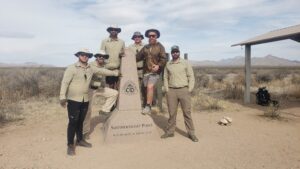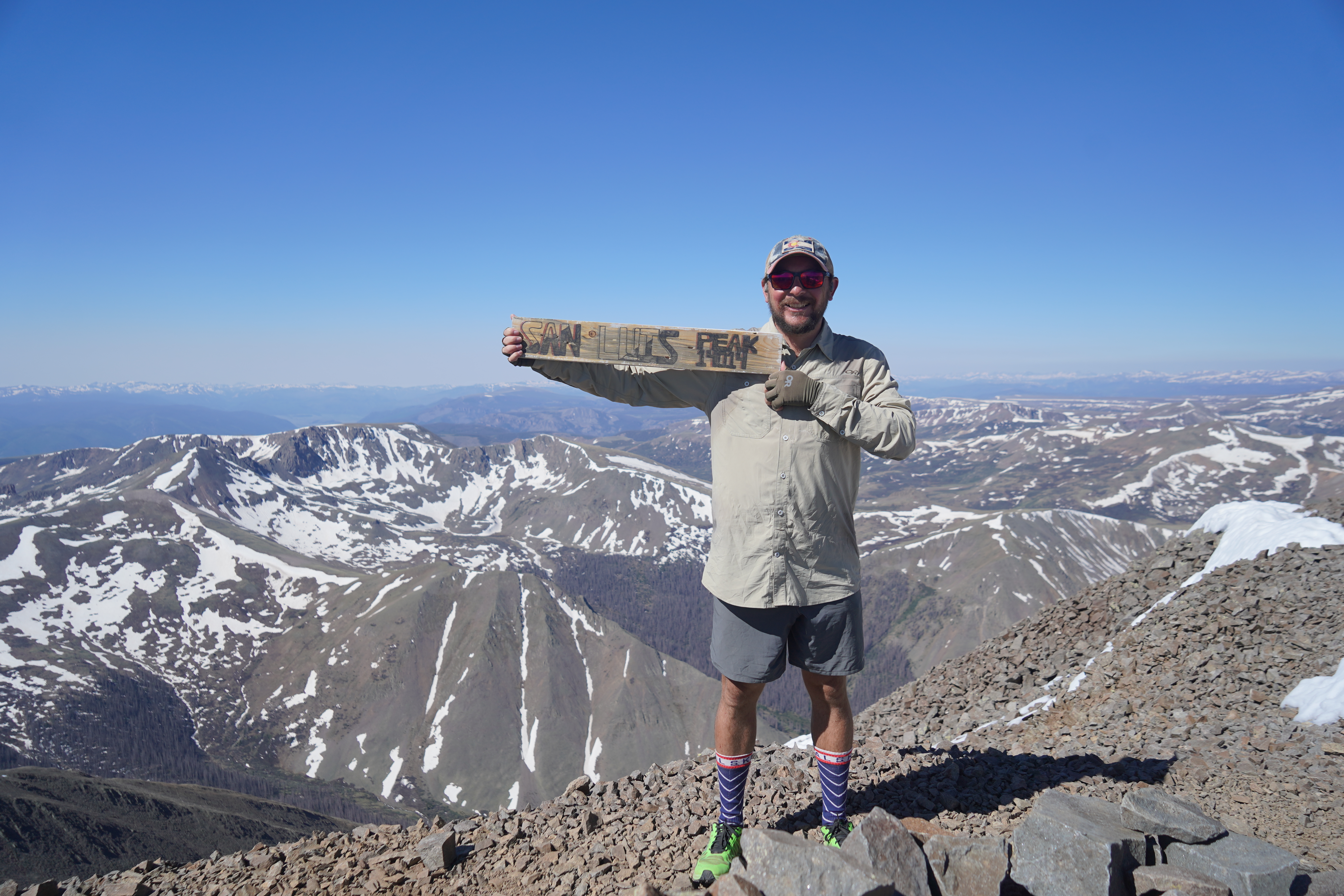“Warrior Expeditions” provide post-combat healing on National Trails.
By Angie Miller, Director of Administration, Warrior Expeditions.
Once an obscure bit of outdoor-industry jargon, the term “thru-hike” has become increasingly common in the American lexicon. As the demand for access to outdoor recreation continues to rise and social media makes it easier to follow the adventures of long-distance hikers than ever before, the concept of thru-hiking is making its way out of obscurity and onto the bucket lists of a growing number of outdoor enthusiasts.
Most trails enthusiasts would at least be familiar enough with the phrase “Warrior Hike” to recognize it as a term referring to a thru-hike completed by a military veteran after their term of service. Few, however, realize that the concept of the “thru-hike”–and perhaps the existence of the entire National Trails System, itself–actually started with one combat veteran’s search for post-service peace of mind.

2021 Warrior Hikers at the start of their thru-hike of the Continental Divide National Scenic Trail. Courtesy Warrior Expeditions.
In 1948, WWII veteran Earl Shaffer became the first person to hike the entire length of what we know today as the Appalachian Trail. According to Shaffer, one of his motivations for this first-of-its-kind, 2,000 mile thru-hike was a desire to “walk the Army out of (his) system.” Over 70 years later, the veteran-led nonprofit Warrior Expeditions continues to harness the healing powers of nature and long-distance hiking, biking, and paddling to help combat veterans transition from their wartime experiences to civilian life.
Warrior Expeditions was founded in 2013 by Marine Corps combat veteran Sean Gobin after he experienced his own post-combat healing while thru-hiking the Appalachian Trail from Georgia to Maine. One of Warrior Expeditions’ primary goals is to teach veterans to use the outdoors as a long-term coping strategy for mental and physical health issues arising from their military service.
To do this, veterans are first outfitted with full gear, equipment, and clothing. They attend a training session at the start of their journey and are shadowed for the first few days on the trail by a seasoned hiker and representative of the organization to ensure their safety. Veterans are also grouped together at the beginning of their journeys to promote camaraderie and support. Warrior Expeditions also coordinates overnight stops approximately weekly in trail towns along the course of each Warrior’s three-to-six-month-long trek. Community volunteers–often veterans’ organizations, trail association members, or other outdoor enthusiasts–provide logistical and moral support. Veterans receive monthly resupply stipends and all needed gear replacement along the way.

Warrior Hiker at the summit of San Luis Peak on the Continental Divide Trail. Courtesy Warrior Expeditions.
The results are life-changing. Since the beginning, Warrior Expeditions has worked with psychologists to track the mental health benefits of extended outdoor expeditions. In pre- and post-expedition mental health surveys, veterans consistently show significant improvements in physical and mental well-being, including meaningful decreases in anxiety, depression, and PTSD symptoms. A common participant sentiment is that the experience is like “hitting a reset button.”
Warrior Expeditions has launched Warrior Hike programs on six National Scenic and Historic Trails (Appalachian, Arizona, Continental Divide, Pacific Crest, Florida, and Ice Age) as well as the Buckeye Trail in Ohio and Mountains to Sea Trail in North Carolina. To accommodate veterans who may be unable to hike long distances, the organization also launched Warrior Paddle on the Mississippi River and Warrior Bike from Washington DC to Washington State.
Close coordination with trail organizations and agencies has been important to successful programming. “We have great collaborative relationships with trail alliances and associations across America,” says Sean Gobin. “They’ve provided us with trail data, connected us to community supporters, and have been instrumental in helping our veterans find peace and healing outdoors.”
Warrior Expeditions is currently working on expanding the reach of their outdoor therapy programs through the development of an online platform that will share training methods and serve as a way for veterans to connect in their local communities through outdoor activities.
For more information on Warrior Expeditions’ programs, including how your organization can work with them on interpretive programming and/or hosting Warrior Expeditions on your trail, visit WarriorExpeditions.org or contact Angela Miller at amiller@warriorhike.org.
